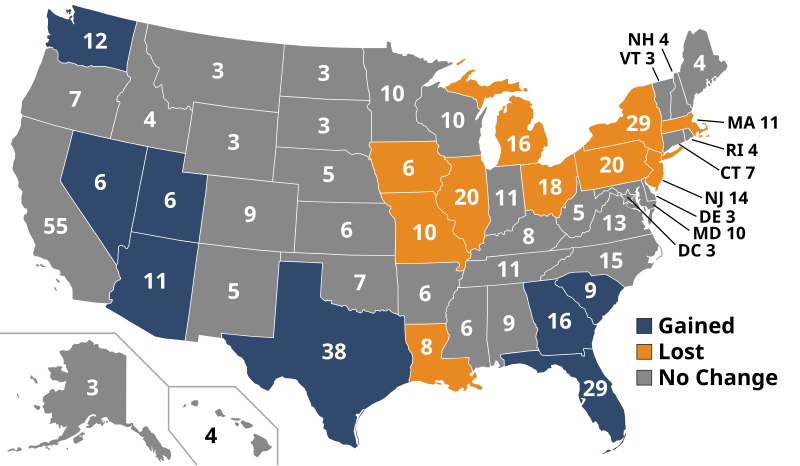On 6 January 2017 these ballots will be counted officially before a joint session of Congress under the direction of the President of the Senate, who also happens to be the Vice President of the United States.
At present, all of the states do determine their slate of electors by means of a popular vote. In the past, some states have simply had the state legislatures choose the electors. South Carolina, for instance, chose this method until the American Civil War.
Here is a map of the results of the popular votes by state:

2016 November election results; by popular vote. The dark red, the larger majority for Donald Trump (GOP) and the darker blue the larger majority for Hillary Clinton (Dem). Thus, the baby blue and light pink are the closest contests. If every elector votes as elected to vote, it will be in favor of Trump 306-232.
[Source: By Ali Zifan - File:Electoral College 2016.svg, CC BY-SA 4.0, https://commons.wikimedia.org/w/index.php?curid=53004568]
In the event of a tie, or if no candidate receives more than 50% of the ballots, the House of Representatives is charged with electing the President, with each state Congressional delegation receiving a vote; the Senate is to elect the new Vice President.

Map of the splendidly dramatic Presidential Election of 1824. In this case, the House elected J. Q. Adams, even though Jackson has won more electoral votes. A good reminder that you need a full 50% of the electoral votes, or it goes to the House of Representatives!
Each state is accorded as many presidential electors as it has members of Congress -- the minimum being 3 for those states with two senators and a single member of the House of Representatives. In all but two states, the popular vote determines the slate of electors by a winner-take-all format -- if one candidate's electors win by a single vote, all the electors of that state will be of that persuasion. In those two states, Nebraska and Maine, the statewide popular vote winner gets 2 electors, and the other electors are tied to winning the Congressional districts of that state.
Interestingly, the only three states have had the greatest number of electors over the course of American History: Virginia (1789-1808), New York (1812-1968), and California (1972-Present). Virginia at its peak in 1804-1808 had 24 electoral votes, New York reached 47 from 1932-1948, and California sits at the all time high of 55 right now.

Map of the current allotment of Electors for each state, noting the change from the last census.
Of course, the origin of this system, for which there is a great deal to say in its favor, is the United States Constitution, which, in Article II, Section 1, directs:
----
The executive Power shall be vested in a President of the United States of America. He shall hold his Office during the Term of four Years, and, together with the Vice President, chosen for the same Term, be elected, as follows:
Each State shall appoint, in such Manner as the Legislature thereof may direct, a Number of Electors, equal to the whole Number of Senators and Representatives to which the State may be entitled in the Congress: but no Senator or Representative, or Person holding an Office of Trust or Profit under the United States, shall be appointed an Elector.
[The Electors shall meet in their respective states and vote by ballot for President and Vice-President, one of whom, at least, shall not be an inhabitant of the same state with themselves; they shall name in their ballots the person voted for as President, and in distinct ballots the person voted for as Vice-President, and they shall make distinct lists of all persons voted for as President, and of all persons voted for as Vice-President, and of the number of votes for each, which lists they shall sign and certify, and transmit sealed to the seat of the government of the United States, directed to the President of the Senate; -- the President of the Senate shall, in the presence of the Senate and House of Representatives, open all the certificates and the votes shall then be counted; -- The person having the greatest number of votes for President, shall be the President, if such number be a majority of the whole number of Electors appointed; and if no person have such majority, then from the persons having the highest numbers not exceeding three on the list of those voted for as President, the House of Representatives shall choose immediately, by ballot, the President. But in choosing the President, the votes shall be taken by states, the representation from each state having one vote; a quorum for this purpose shall consist of a member or members from two-thirds of the states, and a majority of all the states shall be necessary to a choice. The person having the greatest number of votes as Vice-President, shall be the Vice-President, if such number be a majority of the whole number of Electors appointed, and if no person have a majority, then from the two highest numbers on the list, the Senate shall choose the Vice-President; a quorum for the purpose shall consist of two-thirds of the whole number of Senators, and a majority of the whole number shall be necessary to a choice. But no person constitutionally ineligible to the office of President shall be eligible to that of Vice-President of the United States.]
(N.B., the section in the [ ] amended by the XII Amendment.)
-----
For more information on the Electoral College, you should certainly note this page run by the National Archives and Records Administration: Archives.gov: Electoral College
It kind of reminds me of the Electoral College of the Holy Roman Empire. Almost.
Live well!
No comments:
Post a Comment